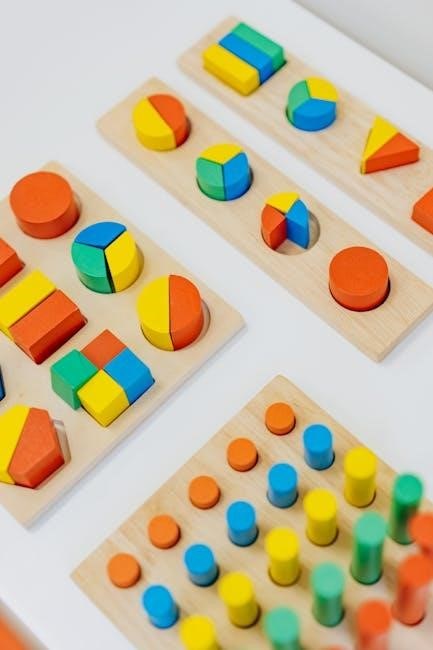juki mo 6700 fip knife guide
Lost with your Juki MO-6700 FIP knife? Our guide makes serging smooth! Get expert tips and tricks for perfect seams.
Lost with your Juki MO-6700 FIP knife? Our guide makes serging smooth! Get expert tips and tricks for perfect seams.
Seeking Mahalakshmi Sahasranamam in Telugu PDF? Get your instant download and immerse yourself in the goddess’s powerful mantras. Unlock prosperity now!
Lost your Fisher DVC6200 instruction manual? No sweat! Download it instantly from Lylek.com and get your valve working perfectly. Easy peasy!
Can’t find your Cuisinart ICE-21 ice cream maker manual? Download it instantly here and get back to churning out delicious frozen treats! Get your **Cuisinart ICE-21** questions answered.
Dive into the timeless wisdom of ‘The Two Wolves’ story! Download your free PDF copy and explore the battle within. Which wolf will you feed? Get your PDF now!
The Canic Math 53 final exam is a comprehensive assessment. It covers all multivariable calculus topics taught throughout the semester. This exam constitutes a significant portion‚ often around 30%‚ of a student’s final grade.
The Math 53 final with Professor Canic follows a standard format. It includes comprehensive coverage of multivariable calculus. Expect various question types‚ and it is always a closed-book exam with no calculators permitted‚ except for the reference sheet.
The Math 53 final exam‚ under Professor Canic‚ rigorously assesses students’ understanding of multivariable calculus. The exam includes topics such as partial derivatives‚ multiple integrals‚ vector calculus‚ and related theorems. Students should expect questions that require them to apply these concepts in various contexts. A strong grasp of fundamental principles is essential for success.
The exam often tests the ability to solve complex problems‚ demonstrate theoretical knowledge‚ and apply calculus techniques to real-world scenarios. Thorough preparation‚ including reviewing lecture notes‚ practice problems‚ and past exams‚ is crucial for mastering the material. The final aims to evaluate the students’ overall comprehension.
Professor Canic’s Math 53 final exam usually includes a variety of question types to assess different aspects of multivariable calculus. Students can expect to see problems involving the computation of partial derivatives‚ multiple integrals in various coordinate systems (Cartesian‚ cylindrical‚ spherical)‚ and applications of vector calculus concepts like line integrals and surface integrals.
Furthermore‚ the exam may include questions that require understanding and application of theorems like Green’s Theorem‚ Stokes’ Theorem‚ and the Divergence Theorem. Conceptual questions testing the understanding of definitions and properties are also common. Problem-solving skills‚ analytical thinking‚ and the ability to apply theoretical knowledge are crucial for success.

Grading in Canic’s Math 53 involves a curve to achieve a target distribution. Approximately 30% of students receive A’s‚ 30% B’s‚ and 30% C’s. A small percentage may fail or get D’s.
Professor Canic’s Math 53 course employs a grading curve to align grade distribution with a predetermined target. Typically‚ the curve aims for roughly 30% of the class to receive a final grade of A. Another 30% are expected to earn a B‚ followed by 30% receiving a C. The remaining students‚ up to 10%‚ may either fail the course or receive a D. The average mean is expected to correspond to a B-‚ assuming the score will represent a bell curve. This curve ensures fairness and considers the overall performance of the class. The specific curve applied can vary slightly each semester‚ depending on the overall performance of the students and any adjustments made by the professor or the department. The final grade is curved so that roughly 30 of class receives an A‚ 30 a B‚ 30 C‚ and up to 10 fail or receive a D.
Bonus points and the exam resurrection policy can significantly influence a student’s final grade in Professor Canic’s Math 53 course. The exam resurrection policy allows students to potentially improve their score on a midterm or the final exam‚ providing a second chance to demonstrate their understanding of the material. Bonus points‚ often offered through participation or extra credit assignments‚ can further boost a student’s overall score. In past semesters‚ approximately three-quarters of students have experienced a final grade increase due to the combined effect of bonus points and the exam resurrection policy. These policies aim to support student learning and provide opportunities for improvement‚ potentially mitigating the impact of a single poor performance on an exam. These policies can be a big help!

Professor Canic’s teaching style involves standard lectures‚ where she presents proofs and examples. While her pace might be slow‚ she is approachable and available to answer questions from students who seek clarification.
Professor Canic’s lecture style in Math 53 is described as standard‚ focusing on presenting proofs and examples relevant to multivariable calculus. However‚ some students have noted that the depth of explanation during these lectures might not be exceptionally detailed. She primarily focuses on covering the core material‚ and while she presents the necessary proofs‚ the in-depth understanding might require additional effort from students outside of class.
The lectures proceed at a slower pace‚ which can be beneficial for some students who appreciate the time to absorb the information‚ while others may find it less engaging. Despite the pace‚ Canic ensures all essential topics are covered‚ making her a favored professor.
Despite the lecture style‚ Professor Canic is known for her accessibility and willingness to address student queries. She consistently stops to answer questions‚ providing clarification on concepts and examples discussed during the lectures. This approach fosters a supportive learning environment where students feel encouraged to seek help when they encounter difficulties.
Her approachability extends beyond the classroom‚ as she’s generally available for questions outside of lecture hours as well. This accessibility is particularly valuable for students seeking further clarification or struggling with specific topics related to the Math 53 curriculum. The combination of standard lectures and open availability makes her a preferred choice for many students.

Finding past exams‚ especially finals‚ for Professor Canic’s Math 53 course can be challenging. Some resources may exist‚ but availability online varies‚ with limited comprehensive archives readily accessible.
The availability of past midterms and finals from Professor Canic’s Math 53 course online is inconsistent. Students often seek these resources for preparation‚ but a centralized‚ comprehensive repository is rare.
Some older exams may be floating around on personal websites‚ student forums‚ or course-specific online groups. However‚ finding them can be difficult‚ and their representativeness of the current exam format is not guaranteed.
Official sources‚ like the university’s course website or Berkeleytime‚ might occasionally host practice materials‚ but complete past exams are seldom officially released. Students often rely on shared resources from classmates or older students.
Keep in mind that exam content and difficulty can vary. Therefore‚ relying solely on past exams may not fully prepare you.
Graduate Student Instructors (GSIs) often supplement Professor Canic’s Math 53 course with additional practice problems. These problems serve as valuable resources for students preparing for midterms and the final exam.
GSIs may distribute these problems during discussion sections‚ through online course platforms‚ or as part of review sessions. The problems typically reflect the types of questions students can expect to encounter on exams‚ providing targeted practice.
Some GSIs may also offer solutions or hints to the practice problems‚ allowing students to check their work and deepen their understanding of the concepts. The availability and format of these practice problems can vary from semester to semester‚ depending on the specific GSI assigned to the course.
Engaging with these problems is crucial for exam success.
The Math 53 final exam can be challenging‚ demanding thorough preparation. Focus on homework‚ practice problems‚ and past exams. Understanding concepts is key for success in the course.
The difficulty level of the Canic Math 53 final exam is often debated‚ particularly when compared to homework problems. Some students find the exam questions to be a direct application of homework concepts‚ while others perceive a significant jump in complexity. Generally‚ expect the final to be more challenging than standard homework exercises‚ requiring a deeper understanding and synthesis of the material. While homework provides a solid foundation‚ the final assesses your ability to apply those concepts in novel and complex situations. Therefore‚ relying solely on homework may not be sufficient; supplementing with additional practice and problem-solving is crucial for exam preparedness. Focus on understanding the underlying principles to tackle the final exam questions effectively.
Homework in Math 53 with Professor Canic is crucial for exam preparation‚ acting as the cornerstone of your understanding. Consistently completing homework assignments allows you to solidify fundamental concepts and build problem-solving skills. The final exam often draws upon the techniques and principles explored in homework‚ making it essential to master these exercises. Diligent homework practice not only reinforces your knowledge but also helps you identify areas where you need further clarification. Actively engaging with the homework problems‚ rather than passively seeking solutions‚ is key to developing a strong foundation for tackling the more challenging exam questions. Treat homework as an opportunity to learn‚ not just a task to complete‚ and you’ll be well-prepared for the final.

Berkeleytime offers course information. Tau Beta Pi may provide resources. GSIs offer practice problems. Past exams are sometimes available online. These resources can greatly aid Math 53 students.
Berkeleytime serves as an online platform providing students with essential course-related data. It is built and maintained by students. It offers a streamlined course discovery experience. On Berkeleytime‚ students can access historical grade distributions for Math 53. This information is sourced from Berkeley’s official CalAnswers database. Students can view course averages‚ section averages‚ and detailed grade distributions.
Berkeleytime facilitates course planning and scheduling. Students can connect with classmates and receive notifications about class availability. This platform simplifies course exploration‚ helping students make informed decisions. With its user-friendly interface and student-driven approach‚ Berkeleytime is a valuable tool for navigating Math 53 and other courses at Berkeley.
Tau Beta Pi (ΤΒΠ) is the Engineering Honor Society. The California Alpha Chapter may offer resources for Math 53 students. Historically‚ past exams from Professor Canic haven’t been readily available through ΤΒΠ’s online repositories. However‚ students might find practice materials. These materials may be old midterms or problems sets‚ contributed by GSIs or former students.
Checking the Tau Beta Pi website or contacting the chapter directly could reveal if they currently offer Math 53-specific support. This support can include study sessions or exam review packets. Even if past Canic exams aren’t available‚ ΤΒΠ resources might provide valuable practice and insights. This could supplement other preparation strategies for the final exam.